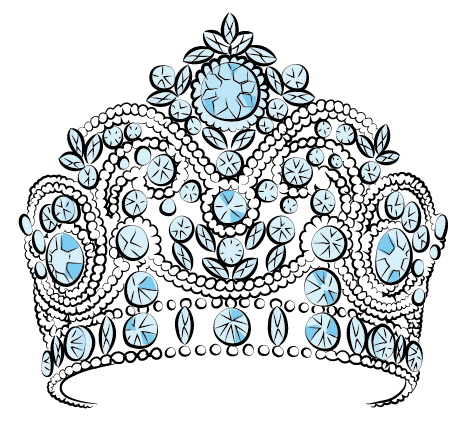Features:
- Fifty-four contestants aged sixty and over
- A theme song titled “The Little Girl Inside”
- Eleven tap dancers
- An infinitude of sequins
For three days every October, the ballroom of the Resorts Casino Hotel in Atlantic City, New Jersey fills with women, and sequins. When I arrive, I see sequins worn in more ways than I knew they could be worn, spangling aggressively across gowns and blouses, glinting from the hem of a bolero or from the center of a jacquard flower. There are rhinestones, brooches, tiaras of differing heights and grandeur. There are shoulder-padded jackets that render the women inside them at once petite and bulky. I count a dozen unique takes on formal trousers: with ruffles, with slits, with a sheer layer veiling a more revealing inner trouser. All the blondes look giraffe tall; all the tans are a deep terra-cotta. The makeup is unabashedly full-faced: masks of foundation, bright knots of lipstick, stripes of blush sweeping up the crests of cheekbones. Stiletto or kitten heels wobble in the hotel carpeting. Here, feminine glamour has been taken to its furthest level. But while glamour is usually synonymous with youth, all the women in this luminous, glittering group are aged sixty or older. This is the Ms. Senior America Pageant.
As I observe the show over the following days, the women cheerfully share their biographies and their ambitions with me. Many of their stories have been rehearsed to hit the appropriate notes of hardship and resilience—Ms. Connecticut was imprisoned in a Stalinist labor camp before immigrating to the US; Ms. Pennsylvania wears a four-diamond brooch to symbolize four life lessons that can help overcome women’s anxieties about aging. Some women are practiced performers and take the competition seriously, but others treat it more like an annual occasion to see friends. “It used to be that when you were a woman and you got on in years, you were expected to just sit back and be a nice grandmother,” Ms. Transatlantic tells me. “But there are so many of us now, baby boomers, and life expectancies are much longer than they used to be, so we’ve got a lot of time to fill.”
Pageantry wasn’t always associated with beauty, or even with competition. The first recorded beauty pageant was created in 1854 by P. T. Barnum as a natural extension, evidently, of beauty contests he had previously held for dogs, birds, and babies. But before World War I, in England and the US, pageants in which townspeople performed historical scenes for their fellow villagers became a popular form of democratic entertainment. Beginning in 1908, the National American Woman Suffrage Association adopted the pageant...
You have reached your article limit
Sign up for a digital subscription and continue reading all new issues, plus our entire archives, for just $1.50/month.
Already a subscriber? Sign in





